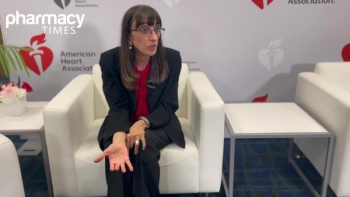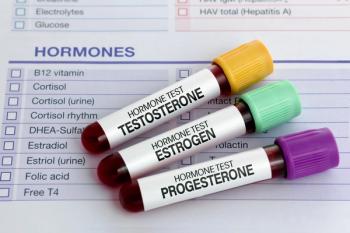
Proinflammatory SARS-CoV-2 Cytokines Higher in Men Than Women, Causing Heightened Rates of Severe Disease
Key Takeaways
- Men exhibit higher levels of proinflammatory cytokines, notably IL-18, leading to more severe COVID-19 outcomes compared with women.
- Elevated IL-18 levels in men correlate with increased neutrophil activation and severe disease progression.
When infected with SARS-CoV-2, the virus that causes COVID-19, higher levels of proinflammatory cytokines are released in men compared with women, leading to more severe disease.
Higher levels of proinflammatory cytokines in men compared with women—driven by the presence of IL-18, which directly affects the activation of neutrophils—can cause a suboptimal immune response against SARS-CoV-2, leading to more severe disease. These observations, which stem from an investigation conducted at Umeå University in Sweden and were published in the European Journal of Immunology, could have significant implications for treatment strategies for severe cases of COVID-19.1,2
How Serious COVID-19 Develops
Although most COVID-19 infections are mild and many infected patients do not experience symptoms, a small percentage of those infected will have severe disease. These are often indicated by a hyperinflammatory reaction in the lungs and dysregulated immune responses, buoyed by the presence of neutrophil extracellular traps (NETs), which can promote immunothrombosis and increase the risk of tissue damage.2,3
Identifying novel targets for treatment and management of severe COVID-19 is essential. It is also crucial to determine groups most at risk for severe disease, which, interestingly, includes men. Despite overall case numbers of COVID-19 being similar for men and women, men were 3 times as likely to require intensive care, a key area of concern.1,4
“Although the total number of cases of diagnosed COVID-19 is similar for men and women, men are 3 times more likely to need intensive care,” Johan Mormark, infectious disease physician at the Department of Clinical Microbiology at Umeå University, said in a news release accompanying the study. “Our study contributes to understanding how this sex-related difference in severe COVID-19 arises.”2
Cytokine Behavior Shows Elevated Risk of Severe Outcomes in Men
Given the differences in COVID-19 severity between men and women and the substantial role of NETs and proinflammatory cytokines in developing severe disease, the investigators evaluated plasma from COVID-19 patients for MPO-DNA complexes indicative of NETs and proinflammatory cytokines, with a major focus on sex-based differences.1,2
Plasma from 206 participants was analyzed, of which 86 (42%) were women. Before the main investigation, the authors confirmed that COVID-19 plasma triggered a release of NET above healthy controls, with incremental increases in accordance with disease severity. They then moved to examining differences in cytokine levels in plasma within the first 30 days of infection.1
Investigators determined that several proinflammatory cytokines were elevated in severe cases of COVID-19, including IL-10, IL-6, CCL7, and IL-18. These cytokines were higher in men than in women, according to the authors. For further analysis, the investigators focused on IL-10 and IL-18. They found that IL-18, which is known to induce the formation of NET, demonstrated meaningfully higher levels in men compared with women. Macrophage-derived chemokine levels agreed, showing similar sex-dependent differences and more severe disease in men, increasing as the disease progressed, according to the investigators.1
“We saw that the increase in the inflammatory cytokine IL-18 was sex-dependent and that the activation of neutrophils was sex-dependent,” Constantin Urban, professor at Umeå University, said in the news release. “On average, both the amount of this cytokine and neutrophil activation markers were higher in blood plasma from men with severe COVID-19 compared to blood plasma from women of the same category.”1
Future Research
These insights are critical to the development of new therapies to treat severe COVID-19. Data garnered in this study support the use of NETs as a clinical marker and therapeutic target in the context of sex-dependent differences and variations in the presence of IL-18. The study authors discussed that studies are under way seeking to treat symptoms of severe COVID-19 through neutrophil activation suppression, which could reduce tissue damage and mortality.2
Future studies will likely focus on more adequately delineating molecular mechanisms behind the sex-related differences in COVID-19 response. Additionally, these results will be verified with larger patient groups. In the meantime, the results provide a thorough description of the interactions that occur when the immune system is responding to COVID-19.2
“In order to further develop this treatment strategy, it is therefore tremendously important to precisely map the difference that occurs in neutrophil responses in men and women with severe COVID-19,” Urban concluded.2
REFERENCES
1. Backman E, Gröning R, Lind A, et al. Elevated plasma levels of NET components in men with severe COVID-19 correlates to increased amounts of IL-18. Euro J Immunol. 2025. doi:10.1002/eji.202451546
2. Umeå University. New discovery explains why men are more affected from severe COVID-19. EurekAlert! News Release. Released May 12, 2025. Accessed June 17, 2025. https://www.eurekalert.org/news-releases/1083494
3. Bonaventura A, Vecchié A, Dagna L, et al. Endothelial dysfunction and immunothrombosis as key pathogenic mechanisms in COVID-19. N Review Immunol. 2021;21:319-329. doi:10.1038/s41577-021-00536-9
4. Peckham H, de Gruijter NM, Raine C, et al. Male sex identified by global COVID-19 meta-analysis as a risk factor for death and ITU admission. N Commun 2020;11:6317. doi:10.1038/s41577-021-00536-9
Newsletter
Stay informed on drug updates, treatment guidelines, and pharmacy practice trends—subscribe to Pharmacy Times for weekly clinical insights.






















































































































































































































